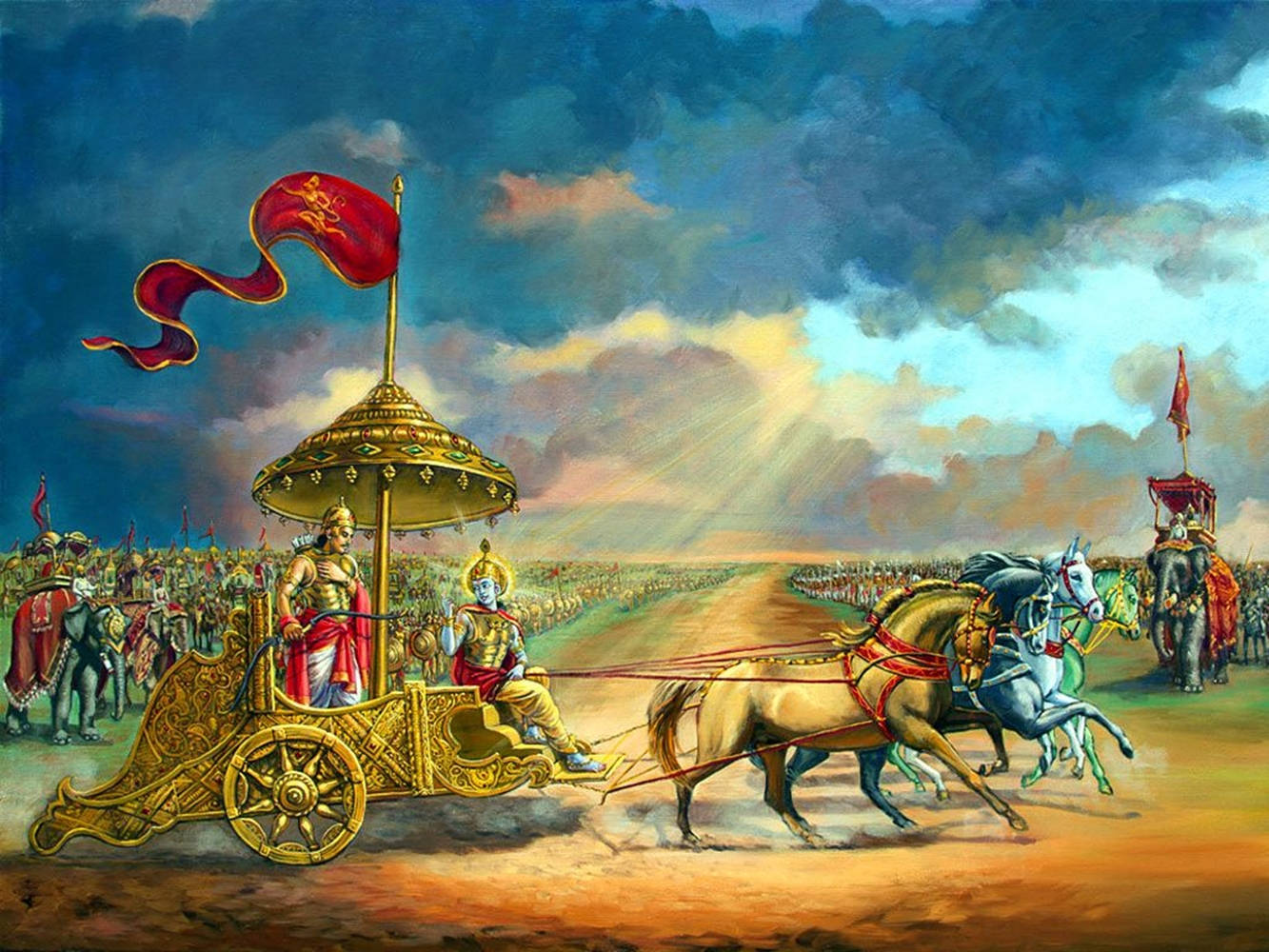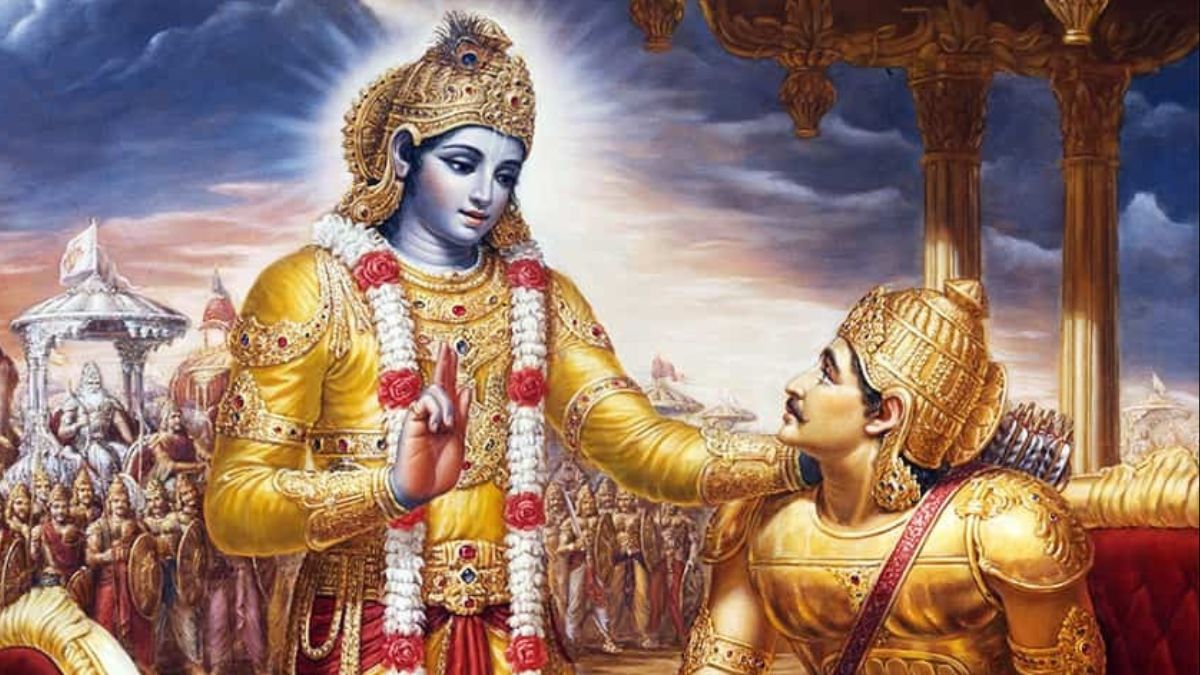Sanatana Dharma, often referred to as the eternal or universal principles of righteousness, offers a comprehensive framework of goals and paths that can profoundly influence corporate culture and management practices. Here’s how:
Ethical Conduct (Dharma): At the core of Sanatana Dharma lies the principle of dharma, which encompasses ethical conduct, duty, and righteousness. In the corporate context, upholding dharma translates to maintaining integrity, honesty, and fairness in all business dealings. Leaders who adhere to dharma inspire trust among stakeholders, foster a culture of accountability, and contribute to the long-term sustainability of their organizations.
Human Values and Welfare (Artha): Sanatana Dharma emphasizes the pursuit of artha, which encompasses material prosperity and economic well-being. However, it also underscores the importance of using wealth and resources for the greater good of society. Corporate leaders can align their business goals with the welfare of employees, customers, and communities, ensuring that economic success is accompanied by social responsibility and inclusive growth.
Personal Growth and Fulfillment (Kama): Kama refers to the pursuit of desires, passions, and personal fulfillment. In the corporate world, this translates to fostering a work environment where employees are encouraged to pursue their passions, unleash their creativity, and achieve their full potential. By prioritizing employee well-being, work-life balance, and personal development initiatives, organizations can enhance employee satisfaction, productivity, and retention.
Spiritual Evolution (Moksha): Sanatana Dharma teaches that ultimate liberation or moksha is attained through self-realization and spiritual growth. While the pursuit of material wealth and success is important, corporate leaders must also recognize the deeper purpose of life and work. By fostering a culture of mindfulness, compassion, and spiritual well-being, organizations can create a more holistic and fulfilling work environment, where employees feel valued, connected, and inspired to contribute their best.
Sanatana Dharma provides a guiding framework for corporate leaders to align their actions and decisions with higher principles, fostering a culture of integrity, compassion, and purpose-driven leadership. By integrating these timeless principles into corporate management practices, organizations can create more sustainable, ethical, and values-driven businesses that contribute positively to the welfare of society and the world at large.


Applying Ancient Wisdom: Mahabharata Principles for Modern Corporate Management
Introduction: In the fast-paced and ever-evolving world of corporate management, timeless wisdom can often provide invaluable guidance for navigating complex challenges and fostering sustainable success. One such source of wisdom is the Mahabharata, an ancient Indian epic renowned for its profound teachings on leadership, ethics, and human nature. In this article, we explore the relevance of Mahabharata principles to modern corporate management, delving into how insights from this epic can inform and inspire contemporary leaders in their pursuit of excellence.
Overview of the Mahabharata: The Mahabharata, composed over two millennia ago, stands as one of the world’s greatest literary and philosophical treasures. Spanning over 100,000 verses, it narrates the epic tale of the Kurukshetra War, a conflict between two branches of the Kuru dynasty – the Pandavas and the Kauravas. Beyond its gripping narrative, the Mahabharata delves deep into the complexities of human nature, morality, and the pursuit of dharma (righteousness). Its rich tapestry of characters, from the noble and virtuous to the flawed and conflicted, offers profound insights into the intricacies of leadership, governance, and interpersonal dynamics.
Relevance of Mahabharata Principles to Corporate Management: The principles and teachings of the Mahabharata resonate strongly with the challenges and opportunities faced by modern corporate leaders. At the heart of the epic lies the concept of dharma, which encompasses ethical conduct, duty, and moral responsibility. In today’s corporate landscape, ethical leadership is more critical than ever, as organizations grapple with issues of transparency, accountability, and social impact. Leaders who embody the principles of dharma inspire trust, foster a culture of integrity, and steer their organizations towards sustainable growth.
Mahabharata offers profound insights into the dynamics of teamwork, collaboration, and strategic decision-making. The Pandavas, despite facing numerous adversities, emerge victorious in the Kurukshetra War due to their unity, resilience, and unwavering commitment to their cause. Similarly, in the corporate realm, effective leadership hinges on the ability to cultivate high-performing teams, nurture a culture of collaboration, and align collective efforts towards shared goals. By drawing inspiration from the Mahabharata, leaders can harness the power of teamwork to drive innovation, adaptability, and competitive advantage.
The epic’s portrayal of conflict resolution, negotiation, and diplomacy holds valuable lessons for corporate managers seeking to navigate interpersonal disputes, manage stakeholder relationships, and mitigate organizational risks. Whether in the boardroom or on the battlefield, the principles of effective communication, empathy, and strategic thinking remain paramount in achieving favorable outcomes and maintaining harmony within the organization.
Mahabharata serves as a timeless guidebook for ethical leadership, effective governance, and enlightened decision-making in the corporate world. By embracing its principles, today’s managers can elevate their leadership capabilities, foster a culture of excellence, and lead their organizations towards enduring success amidst the complexities of the modern business landscape.
Part 1: Leadership Lessons from the Mahabharata
The Virtuous Leader
Upholding Dharma in Leadership:
In the Mahabharata, the concept of dharma serves as a guiding principle for leaders, emphasizing the importance of righteousness, integrity, and moral duty. Yudhishthira, the eldest of the Pandavas, epitomizes the virtuous leader who upholds dharma even in the face of adversity. His unwavering commitment to truth and justice inspires loyalty and respect among his followers, demonstrating that ethical leadership is not merely a choice but a sacred obligation.
Lessons from Yudhishthira and Bhishma:
Bhishma, the venerable grandsire of the Kuru dynasty, exemplifies the wisdom and selflessness of a true leader. Despite his allegiance to the Kauravas, Bhishma remains impartial and impartial in his decisions, guided solely by his sense of duty towards his kingdom. His tragic fate serves as a poignant reminder of the sacrifices often required of leaders who adhere to their principles, even in the face of personal suffering.
The Art of Strategic Leadership
Applying Krishna’s Wisdom to Corporate Strategy:
Krishna, the divine charioteer and advisor to Arjuna, imparts timeless wisdom on the art of strategic leadership. His teachings in the Bhagavad Gita offer profound insights into decision-making, risk management, and goal-setting – all essential aspects of corporate strategy. By aligning actions with higher principles and maintaining focus amidst chaos, leaders can navigate challenges with clarity and purpose, steering their organizations towards success.
Lessons from Krishna’s Counsel to Arjuna:
Arjuna’s moment of doubt and despair on the battlefield of Kurukshetra mirrors the dilemmas often faced by leaders in times of crisis. Krishna’s counsel to Arjuna emphasizes the importance of self-awareness, resilience, and ethical conduct in leadership. By transcending ego-driven desires and aligning with one’s true purpose, leaders can overcome obstacles and lead with courage and conviction.
Leading with Integrity
Ethical Leadership Lessons from the Pandavas:
The Pandavas, led by Yudhishthira, exemplify the virtues of ethical leadership – honesty, humility, and compassion. Despite facing numerous trials and tribulations, they remain steadfast in their commitment to dharma, refusing to compromise their principles for personal gain. Their unwavering integrity inspires trust and loyalty among their followers, laying the foundation for a resilient and principled organization.
Consequences of Unethical Leadership: Duryodhana’s Downfall:
Conversely, the downfall of Duryodhana, the ambitious and power-hungry prince of the Kauravas, serves as a cautionary tale of the perils of unethical leadership. Driven by jealousy, arrogance, and deceit, Duryodhana’s misguided actions lead to his ultimate ruin, bringing devastation upon himself and his kingdom. His tragic fate underscores the importance of ethical conduct and moral responsibility in leadership, reminding us that true greatness lies not in power or wealth, but in integrity and righteousness.


Part 2: Building High-Performing Teams
Synergy and Collaboration
Lessons from the Pandavas’ Brotherhood:
The bond of brotherhood among the Pandavas – Yudhishthira, Bhima, Arjuna, Nakula, and Sahadeva – serves as a powerful example of synergy and collaboration. Despite their diverse strengths and personalities, the Pandavas complement each other’s abilities and work together towards a common goal – the restoration of their kingdom and the establishment of righteousness. Their unity in purpose and mutual support foster a sense of camaraderie and trust, laying the foundation for a high-performing team.
Fostering Teamwork in Corporate Settings:
In the corporate world, effective teamwork is essential for achieving organizational goals and driving innovation. Leaders can draw inspiration from the Pandavas’ example by cultivating a culture of collaboration, respect, and inclusivity within their teams. By recognizing and leveraging the unique strengths of each team member, fostering open communication, and promoting a shared vision, leaders can harness the collective intelligence and creativity of their teams, leading to greater productivity and success.
Effective Communication and Conflict Resolution
Diplomacy and Negotiation: Insights from Vidura:
Vidura, the wise and impartial advisor to the Kuru dynasty, demonstrates the importance of diplomacy and negotiation in resolving conflicts. His counsel to Dhritarashtra and the Kauravas emphasizes the value of dialogue, compromise, and consensus-building – essential skills for effective conflict resolution in corporate settings. By fostering a culture of open communication and constructive dialogue, leaders can address conflicts proactively, build trust, and find mutually beneficial solutions.
Resolving Conflicts with Wisdom: Lessons from Draupadi’s Dispute:
The episode of Draupadi’s disrobing highlights the destructive consequences of unresolved conflicts and unchecked ego. Draupadi, the virtuous queen of the Pandavas, finds herself at the center of a dispute that threatens to escalate into violence. However, through her wisdom and courage, she navigates the situation with grace and dignity, ultimately averting catastrophe. Her example underscores the importance of empathy, emotional intelligence, and ethical conduct in conflict resolution, serving as a reminder to corporate leaders to approach conflicts with wisdom and compassion.


Part 3: Organizational Culture and Governance
Institutionalizing Ethics
Creating a Culture of Integrity and Accountability:
Ethical conduct is the cornerstone of a healthy organizational culture. Drawing from the failures of Hastinapura’s governance, where corruption, nepotism, and favoritism led to downfall, modern corporate leaders must prioritize integrity and accountability. By establishing clear ethical guidelines, fostering transparency, and holding individuals accountable for their actions, organizations can cultivate a culture where ethical behavior is not just encouraged but expected at all levels.
Learning from the Failures of Hastinapura’s Governance:
Hastinapura’s downfall serves as a cautionary tale of the consequences of poor governance and ethical lapses. Leaders must heed the lessons from Hastinapura’s mistakes, recognizing the importance of sound governance structures, checks and balances, and ethical leadership in safeguarding the long-term viability of their organizations. By learning from history, leaders can proactively mitigate risks and strengthen the ethical fabric of their organizations.
Nurturing Talent and Mentorship
The Role of Guru-Disciple Relationships in Corporate Mentorship:
Mentorship plays a crucial role in nurturing talent and developing future leaders. Drawing inspiration from the guru-disciple relationships depicted in the Mahabharata, where mentors like Dronacharya imparted wisdom, guidance, and skills to their disciples, organizations can create robust mentorship programs to foster professional growth and leadership development. By pairing experienced mentors with mentees and providing opportunities for learning, feedback, and skill development, organizations can empower their employees to reach their full potential.
Developing Future Leaders: Lessons from Dronacharya’s Training of Arjuna:
Dronacharya’s training of Arjuna exemplifies the transformative power of mentorship in shaping future leaders. Through rigorous training, personalized guidance, and experiential learning, Dronacharya equips Arjuna with the skills, knowledge, and mindset necessary to excel in his role as a warrior and leader. Similarly, in the corporate world, leaders must invest in the development of their talent pipeline, identifying high-potential individuals and providing them with the support and opportunities needed to grow into leadership roles. By nurturing talent and fostering a culture of mentorship, organizations can ensure a steady supply of capable leaders to drive success and innovation.

Part 4: Strategy and Innovation
Strategic Planning and Adaptability
Anticipating Change: Lessons from Karna’s Choices:
Karna’s journey in the Mahabharata is marked by his resilience and adaptability in the face of adversity. Despite facing numerous challenges, Karna’s strategic acumen and ability to anticipate change enable him to navigate complex situations with agility. Leaders can learn from Karna’s example by embracing a forward-thinking approach to strategic planning, anticipating market shifts, and proactively adjusting their strategies to seize opportunities and mitigate risks.
Agility in Corporate Strategy: Insights from the Kurukshetra Battlefield:
The battlefield of Kurukshetra serves as a metaphor for the dynamic and unpredictable nature of the business environment. Just as military commanders must adapt their strategies in real-time to respond to changing circumstances, corporate leaders must cultivate agility and flexibility in their strategic planning. By fostering a culture of innovation, experimentation, and continuous learning, organizations can stay ahead of the curve and thrive in an ever-evolving marketplace.
Innovation and Risk-taking
Balancing Innovation with Tradition: Insights from Ekalavya’s Story:
Ekalavya’s story highlights the tension between innovation and tradition. As a self-taught archer, Ekalavya demonstrates remarkable skill and ingenuity, but his unorthodox methods ultimately lead to conflict with established norms and authority figures. Similarly, in the corporate world, leaders must strike a balance between encouraging innovation and respecting existing processes and protocols. By fostering a culture that values both tradition and innovation, organizations can harness the creative potential of their employees while preserving core values and principles.
Embracing Entrepreneurial Spirit: Lessons from Shiva’s Teachings to Arjuna:
Shiva’s teachings to Arjuna on the battlefield of Indraprastha underscore the importance of embracing an entrepreneurial spirit in corporate strategy. Shiva encourages Arjuna to embrace risk-taking, innovation, and creative problem-solving – qualities essential for entrepreneurial success. In today’s rapidly changing business landscape, organizations must cultivate an environment where employees are encouraged to think outside the box, challenge the status quo, and pursue bold ideas. By fostering an entrepreneurial mindset, organizations can unleash the full potential of their teams and drive innovation and growth.

Part 5: Corporate Social Responsibility and Sustainability
Dharma in Business
Social Responsibility: Applying Yudhishthira’s Principles in Business Practices:
Yudhishthira, the embodiment of righteousness and integrity in the Mahabharata, serves as a role model for ethical leadership and social responsibility. His unwavering commitment to dharma extends beyond personal conduct to encompass business practices as well. Leaders can emulate Yudhishthira’s principles by prioritizing the well-being of all stakeholders – employees, customers, communities, and the environment – in their decision-making processes. By aligning business goals with broader societal values and interests, organizations can create shared prosperity and contribute positively to society.
Sustainable Business Practices: Lessons from the Forest Dwellers:
The Mahabharata contains valuable lessons on sustainable living and environmental stewardship, as exemplified by the forest dwellers encountered by the Pandavas during their exile. Living in harmony with nature, these communities demonstrate the importance of resource conservation, waste reduction, and respect for biodiversity. In the corporate world, leaders can draw inspiration from the forest dwellers’ ethos to implement sustainable business practices that minimize environmental impact and promote long-term sustainability. By embracing initiatives such as renewable energy adoption, waste reduction, and eco-friendly manufacturing processes, organizations can not only mitigate environmental risks but also enhance their brand reputation and appeal to socially conscious consumers.
Mahabharata offers timeless wisdom that can guide corporate leaders in navigating the complexities of modern business while upholding principles of ethics, integrity, and social responsibility. By drawing inspiration from the epic’s narratives of leadership, teamwork, strategy, and moral values, organizations can foster a culture of excellence, innovation, and sustainability, ultimately driving long-term success and societal impact.
Conclusion
Summary of Key Principles:
Throughout this exploration of Mahabharata principles applied to corporate management, several key themes have emerged. From the importance of ethical leadership and strategic planning to fostering teamwork, innovation, and social responsibility, the epic offers timeless wisdom that resonates with modern-day challenges. Upholding principles of integrity, accountability, and compassion forms the foundation of effective leadership and organizational success.
Reflections on Applying Mahabharata Principles to Corporate Management:
The Mahabharata serves as a rich source of inspiration for corporate leaders seeking to navigate the complexities of the modern business world. By applying its principles of dharma, teamwork, and strategic thinking, leaders can foster a culture of excellence, innovation, and social responsibility within their organizations. Reflecting on these principles can lead to profound insights and transformative changes in leadership practices and organizational culture.
Looking Ahead: Evolving Leadership in the Modern World:
As we look to the future, the need for enlightened leadership has never been greater. The Mahabharata reminds us that leadership is not just about achieving individual success but about serving a higher purpose and contributing to the greater good. In an increasingly interconnected and rapidly changing world, leaders must embrace adaptability, empathy, and a commitment to lifelong learning to meet the challenges and opportunities of the 21st century.
To further support the values of ethical leadership, social responsibility, and community impact, readers are encouraged to participate and contribute to organizations like the MEDA Foundation. By supporting initiatives that promote economic development, empower marginalized communities, and foster sustainable practices, individuals and businesses can make a meaningful difference in the world.
Further Reading References:
- “Leadership Secrets from the Mahabharata” by Debashis Chatterjee
- “Business Sutra: A Very Indian Approach to Management” by Devdutt Pattanaik
- “The Mahabharata: A Modern Rendering” by Ramesh Menon
- “The Bhagavad Gita: A New Translation” by Stephen Mitchell









